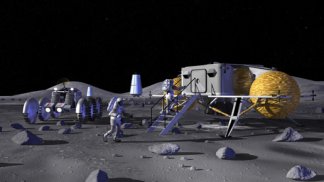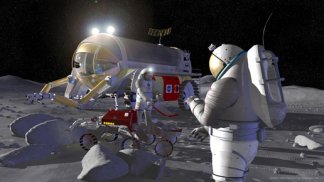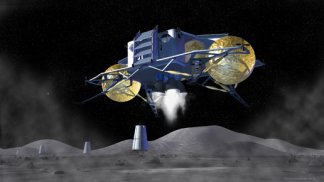Back to the moon
NASA unveiled its plans for establishing a base on the moon by the year 2024.
By Emily Sohn
Someday, you might be able to live on the moon.
In 2020, NASA plans to begin building a base on the moon, the space agency announced last week. The project should be finished by 2024. If you’re 10 years old today, you’ll be 28 then. So, if you train to be an astronaut, you could be one of the first to visit the lunar outpost.
 |
|
A lunar outpost might be up and running by 2024. This illustration shows astronauts returning to their shelter after parking their rover.
|
| NASA |
Neil Armstrong was the first person to walk on the moon in 1969. At the time, he called it “one small step for man, one giant leap for mankind.” Space exploration has continued, but no one has set foot on the moon since 1972.
For the new project, NASA talked with more than 1,000 scientists and engineers to come up with a plan. The agency decided to build a single base instead of developing several landing sites.
At first, astronauts would spend a week at a time on the moon. Eventually, stays would last for 6 months, maybe longer. Once there, astronauts would drive around in a rover with pressurized air so that they could breathe without wearing spacesuits all the time.
 |
|
On the moon, astronauts and robots would work together to do important tasks.
|
| NASA |
NASA hasn’t yet decided where on the moon to put the base, and the agency may not make a final decision until 2013. This decision will depend on data collected by several robotic scouting missions. The Lunar Reconnaissance Orbiter, for one, will go to the moon in 2008. A lander will arrive in 2010.
People will finally return to the moon in 2014, when a new rocket called Aries 1 will carry four people in a new type of space shuttle. NASA plans to retire the current fleet of shuttles by 2010.
In the meantime, the space agency is eyeing an area called the Shackleton crater, near the moon’s south pole, as a good spot to settle. The area gets sunlight 75 to 80 percent of the time, so the base could run on solar power. Nearby is a dark region that might contain water ice and other resources that could fuel operations.
 |
|
A lunar lander touches down on the moon.
|
| NASA |
The lunar complex could eventually become a training site and launching base for future missions to Mars, scientists say. The moon would also be a great place to set up radio telescopes and huge, specially constructed visible-light telescopes with liquid mirrors, far from Earth’s many distractions.







